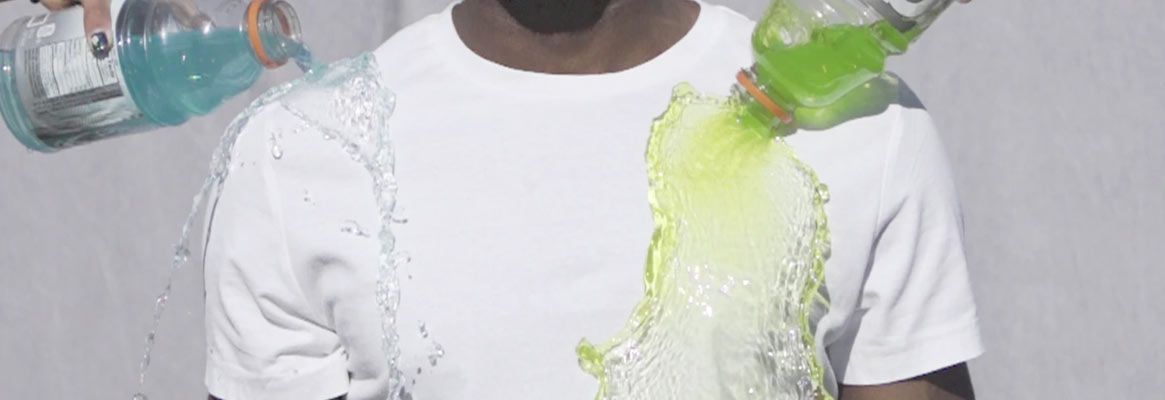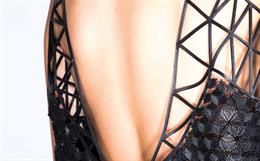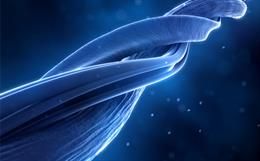Nature has a unique cleaning/washing process for almost allits belongings except human beings. Human is the filthiest being on the motherplanet. Further, human is on a spree to spoil the environment but is busy in thedevelopment of modern and comfortable technologies for cleaning/washing himselfas well as his belongings. Modern human is very conscious about the cleanlinessof his clothes and is wasting lots of water, energy and time and generatingwater pollution where as on the other side, nature is continuing to keep itself clean without such side effects. Scientists are trying to understandnatures this unique feet and to replicate the same for the use of human. They areworking to develop self cleaning clothes by imitating the process.
Cloth cleaning is a tedious job for every one. Though it issimplified to a great extent with the use of washing machines but still peoplewant that they should wear clothes which clean themselves in natural way andget freedom from washing. Not only lazy people would love self-cleaningclothes, but the time and frustration of not having to wash so much would benothing short of fantastic. With the development in science and technology withclose understanding of natural phenomenon, self-cleaning clothes are no morethe things of dreams. One might add if such a technology could also be appliedto things other than clothes - never having to wash a car, or boat, or floorsagain would be nice. Two approaches to produce self cleaning clothes underinvestigation are:
a) The use of a newly-created chemical coating allows ballsof water to self-clean the surfaces of clothes.
b) The outer water-repelling layer sits atop silver nanoparticles and a reactive polymer.
The idea of using titanium dioxide to make self-cleaningsurfaces is not new. Titanium dioxide, which is used in sunscreens, toothpaste,and paint, is a strong photocatalyst: in the presence of ultraviolet light andwater vapor, it forms hydroxyl radicals, which oxidize, or decompose, organicmatter. Researchers are developing a process that could lead to self-cleaningwool sweaters and silk ties. Wool fibers have to be chemically modified toreceive a stable coating of titanium dioxide nanocrystals, which break down organicmatter (contained in stains) in presence of sunlight. The researcherschemically modify the surface of wool fibers, adding chemical groups calledcarboxylic groups, which strongly attract titanium dioxide. Then they dip thefibers in a titanium dioxide nanocrystal solution. Titanium dioxide can alsodestroy pathogens such as bacteria in the presence of sunlight by breaking downthe cell walls of the microorganisms. This should make self-cleaning fabricsespecially useful in hospitals and other medical settings.
In other technique, self cleaning materials are based onnano crystals making the surface oil or water repellant by controllingwettability and surface interaction. This is a concept that is completelydifferent from that of the titanium dioxide coating. Researchers have created acoating that can be integrated into virtually any fabric, allowing dirt to be releasedwhen water is applied. The patented coating allows clothing to be cleaned simplyby spraying with water or wiping with a damp cloth and reduces the number of cleaningsrequired. The coating is one of the latest applications of nanoscience whichhas been used for everything from creating stain- and wrinkle-resistantclothing to increasing computer memory. The coating -- a polymer film mixedwith silver nanoparticles is infused into fabric, creating a series ofmicroscopic bumps that cause dirt and other substances to bounce off when wateris applied. The film won't make clothing look glossy because the particles are too tiny to be seen and, theoretically, have no color because they are smaller thanthe wavelength of light. These nanocrystals cannot decompose wool and areharmless to skin and moreover, the coating does not change the look and feel ofthe fabric. Besides clothing, the film also could be used on lawn furniture, convertiblecar tops and outdoor campers. Further, we can imagine a self-cleaning bathroomwith no more drudgery of scrubbing the wall, floor and the shower curtain.Tiles clean themselves and keep the toilet clean.
Each of these techniques to make self-cleaning materials hasits own limitations. Superhydrophobic materials, which repel water, aretypically good at removing dirt particles but don't deal with oils well.Materials that repel oil might not work with certain types of oil. Thetitanium-dioxide-coated materials, on the other hand, will not work unless theyare exposed to sunlight for hours. But, the sunlight requirement has not
stopped the technology from getting commercial interest.Several wool manufacturers have suggested that they'd like to evaluate thetechnology.
The researchers are currently working on integrating antimicrobial particles that will essentially kill off bacteria and prevent bacterial penetration. The particles will allow the fabric to dispel odor, such as those from perspiration and cigarette smoke. Self-cleaning clothes are expected to be on the market within the next five years, according to the researchers. Self-cleaning fabrics could revolutionize the sport apparel industry. The technology has already been used to create t-shirts and underwear that can be worn hygenically for weeks without washing. More research is needed before self-cleaning clothes are available at high street shops, but manufacturers are said to be watching developments closely.
The ultimate consequence in developing these self-cleaning fabrics is that we can really limit our use of things like chemicals, energy and water. But there are a whole lot of challenges that need to be overcome to prove the viability of any self-cleaning treatment. It is said that the dimethylformamide used in the process is a potentially carcinogenic health hazard. Currently, industrial testing and mill trials of this patent-pending technology are being conducted. It is anticipated that as soon as the technology receives the approval technically and economically, self-cleaning property will become a standard feature of future textile and other commonly used materials to maintain hygiene and prevent the spreading of pathogenic infection.
References:
1) http://www.technologyreview.com/Nanotech/20306/
2) http://www.msnbc.msn.com/id/6578000/
3) http://www.livescience.com/technology/070105_nanofabric.html
4) http://www.jyi.org/news/nb.php?id=21
5) http://www.cosmosmagazine.com/node/1852
7) http://women.timesonline.co.uk/tol/life_and_style/women/fashion/article3389357.ece
8) http://www.telegraph.co.uk/earth/main.jhtml?xml=/earth/2008/02/11/scisock111.xml
9) http://my2cents4theday.blogspot.com/2008/02/finally-self-cleaning-clothes.html
10) http://www.smh.com.au/articles/2004/06/15/1087244883493.html
About the Author:
The author is associated with the Department of Physics, SLIET, Distt.- Sangrur Punjab.
To read more articles on Textile, Industry, Technical Textile, Dyes & Chemicals, Machinery, Fashion, Apparel, Technology, Retail, Leather, Footwear & Jewellery, Software and General please visit http://articles.fibre2fashion.com
To promote your company, product and services via promotional article, follow this link: http://www.fibre2fashion.com/services/article-writing-service/content-promotion-services.asp







